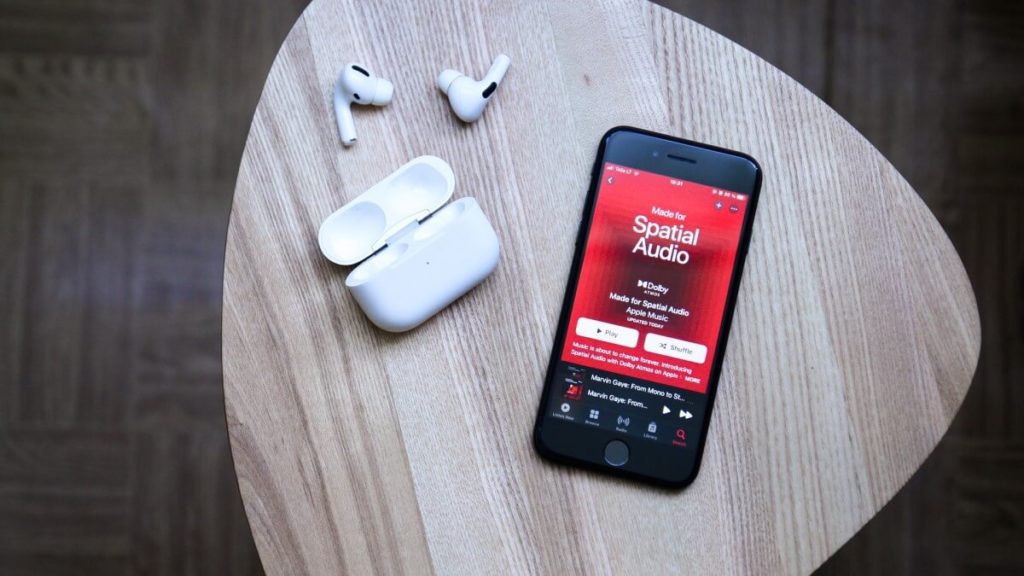
HYPERVSN 3D Catalog
USD 1,200
Qty

HYPERVSN 3D Catalog
USD 1,200
Qty

HYPERVSN 3D Catalog
USD 1,200
Qty
Cart Subtotal:
USD 3,600

HYPERVSN
Marketing Department
Spatial audio is a technology that creates a realistic and immersive sound experience for listeners. It simulates the way sound waves interact with the environment and the human ear, creating a sense of direction, distance, and depth. We use this audio format for various applications, such as gaming, virtual reality, music, movies, and podcasts.
Spatial audio uses a combination of techniques to create a 3D sound field.
Binaural recording is a method of capturing sound using two microphones that mimic the position and shape of human ears. The resulting recording preserves the subtle differences in timing, volume, and frequency occurring when sound reaches each ear. This creates a natural and realistic sound that changes depending on the listener’s head orientation.
The head-related transfer function (HRTF) is a mathematical model that describes how sound waves are filtered by the head, torso, and ears of a listener. It accounts for factors such as ear shape, head size, and ear canal length that affect how sound is perceived. By applying HRTF to a sound source, spatial audio can create personalised and accurate sound localisation.
Ambisonics is a technique of encoding and decoding sound using spherical harmonics. It captures the sound field in all directions and allows for flexible playback on different speaker configurations or headphones. Ambisonics can also be combined with HRTF to create a binaural rendering of sound.
Object-based audio is a technique of representing sound as individual objects that have metadata such as position, velocity, and size. Object-based audio allows dynamic and interactive sound mixing and rendering based on the listener’s perspective and environment.
It has many advantages over traditional stereo or surround sound systems. Some of them are:
Enhanced immersion creates a more realistic and engaging sound experience matching visual content. For example, in a game or a VR application, spatial audio can make you feel like you are in the middle of the action, with sounds coming from different directions and distances.
Improved clarity can help you focus on the sounds that matter to you and filter out the ones that don’t. For example, in a podcast or a movie, spatial audio can make the dialogue more clear and intelligible, while reducing the background noise.
Increased accessibility can also benefit people with hearing impairments or disabilities. For example, spatial audio can provide cues for navigation or orientation in an unfamiliar environment. It can also enhance speech recognition and comprehension for people with hearing loss or cochlear implants.
Spatial audio is becoming more accessible and available on various platforms and devices.
Many headphones support spatial audio features. These features use HRTF and object-based audio to create a 3D sound field on your headphones. You can enjoy this format of audio on headphones using compatible apps or streaming services that support these formats.
Some speakers also support ambisonics and object-based audio to create a 3D sound field on your speakers. You can enjoy spatial audio on speakers using compatible devices or content that support these formats.
Some smartphones have built-in spatial audio capabilities that use sensors such as a gyroscope or accelerometer to track your head movements and adjust the sound accordingly. For example, Apple’s Spatial Audio feature for AirPods Pro and AirPods Max uses this technology to create a cinematic sound experience that follows your device’s screen.
Spatial audio is a technology that creates a realistic and immersive sound experience for listeners. It uses various techniques to simulate the way sound waves interact with the environment and the human ear, creating a sense of direction, distance, and depth. It has many benefits over traditional stereo or surround sound systems, such as enhanced immersion, improved clarity, and increased accessibility. You can enjoy it on various devices such as headphones, speakers, or smartphones using compatible apps or content that supports such formats.




subscribe

USD 1,200
Qty

USD 1,200
Qty

USD 1,200
Qty
Cart Subtotal:
USD 3,600☎️